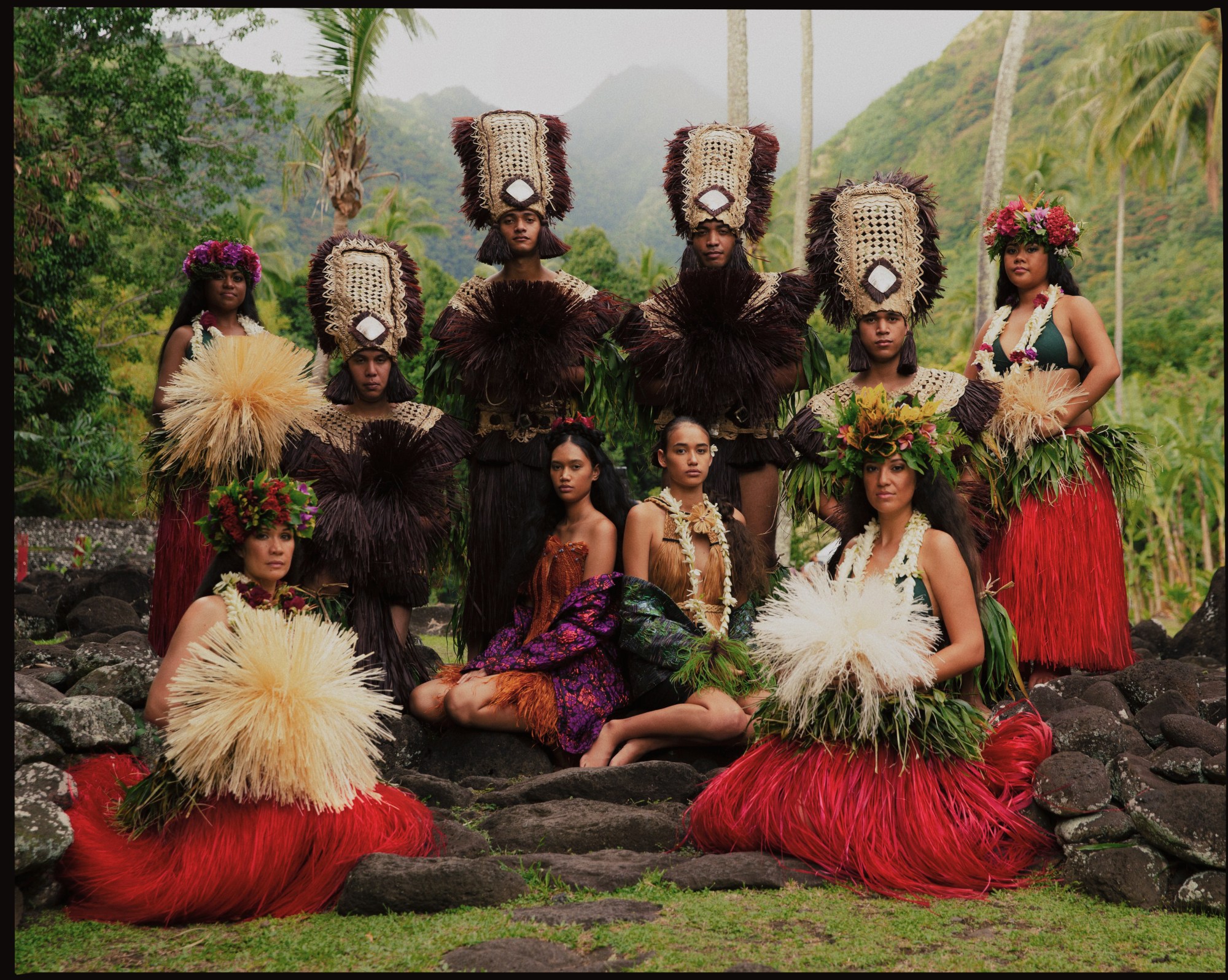Before British and French influence, Polynesians carried their traditions through the generations in dance. This practice was not only a mesmerizing display of movement and sound but a means of storytelling through stunning costume. Traditionally, costumes played an integral part of the Tahitian dance practice as the materials used in creating them showcased the Tahitian connection to the earth and their land. The materials carried the values and heritage of Polynesian folklore and culture. Each of the five archipelagos that make up Polynesia had a certain natural material that they specialized in. In one costume you could find garlands made of local flowers and seeds, skirts made of a grass-like materials called móre, and coconut husk headpieces adorned with Tahitian pearls and the clams that hold them. And for more than 130 years this and many other traditions and Polynesian art forms were criminalized due to religious colonialism.
Today, after almost having their entire culture erased, these South Pacific Islanders are reviving the folklore in unapologetic celebration of their traditions. The rise of traditional tattoos and world renown Polynesian dance groups have pushed the culture. But more recently, Tahitian designers have resurged the use of the materials that characterized the traditional costume to create modern, culturally-charged pieces, and these pieces rule the runways of Tahiti Fashion Week.
“By being far from other countries and being close to nature we were forced to innovate natural unknown materials and give them practical use in the modern world.” says Teani Liu, Tahitian-born stylist and designer. Corsets and bustiers made of pearl and clams, dresses made of seeds and leaves, and all sorts of accessories made of coconut husks have served as the show—stopping moments of the bustling week of events. I landed on the tropical paradise in the midst of Tahiti Fashion Week to document these designers and find out how they’re using their talents to keep their culture alive. What I found was a vibrant fashion industry propelled by their pride for their heritage, and appreciation for the freedom to celebrate it—a reality that many of us rightfully live in, but take for granted.

Manuarii Teauroa, 28, Designer of My Dear Tahiti
“Tahitian dance and dress were considered satanic and obscene and were banned during colonization, as well as other major parts of Tahitian culture. Much of the disdain for our culture was targeted towards women, so I want to use my brand to highlight our beautiful culture and make the Tahitian dream to be exceptional and fabulous”
“Today, we are lucky to live freely on beautiful islands where life is good. Travel the world and you’ll realize that Polynesian culture is beautiful and unique. It makes Tahitians generous people, happy to live, and gives us a sense of solidarity. It’s a strength that is part of me, and that motivates me to bring the stone to the building for my country and live my passion!”
“I hope to encourage Polynesians and the world to dream, and to give them the means to make it happen. Life is worth living and there is no better reward than to make a whole nation proud!”

Dress: My Dear Tahiti (made of Tahitian clams, with Tahitian black pearls across the belt line) Fans: Mama Fauura Creations (made of coconut husks, with Tahitian Clam handles)
“Composed of 800 mother-of-pearl and Tahitian pearls, this dress that took three weeks to create represents the Tuamotus and the Gambier Islands. I dreamed of a siren of the Pacific Ocean, but modern and elegant and put forward the cultured pearl of Polynesia.”

“The famous ‘pupu’ shells are small orange, white, yellow shells that are found underground on the island of Raivavae in the Austral archipelago. They’re very difficult to find and cultivate because they have to be sorted and cleaned by hand before being used for traditional necklaces.”
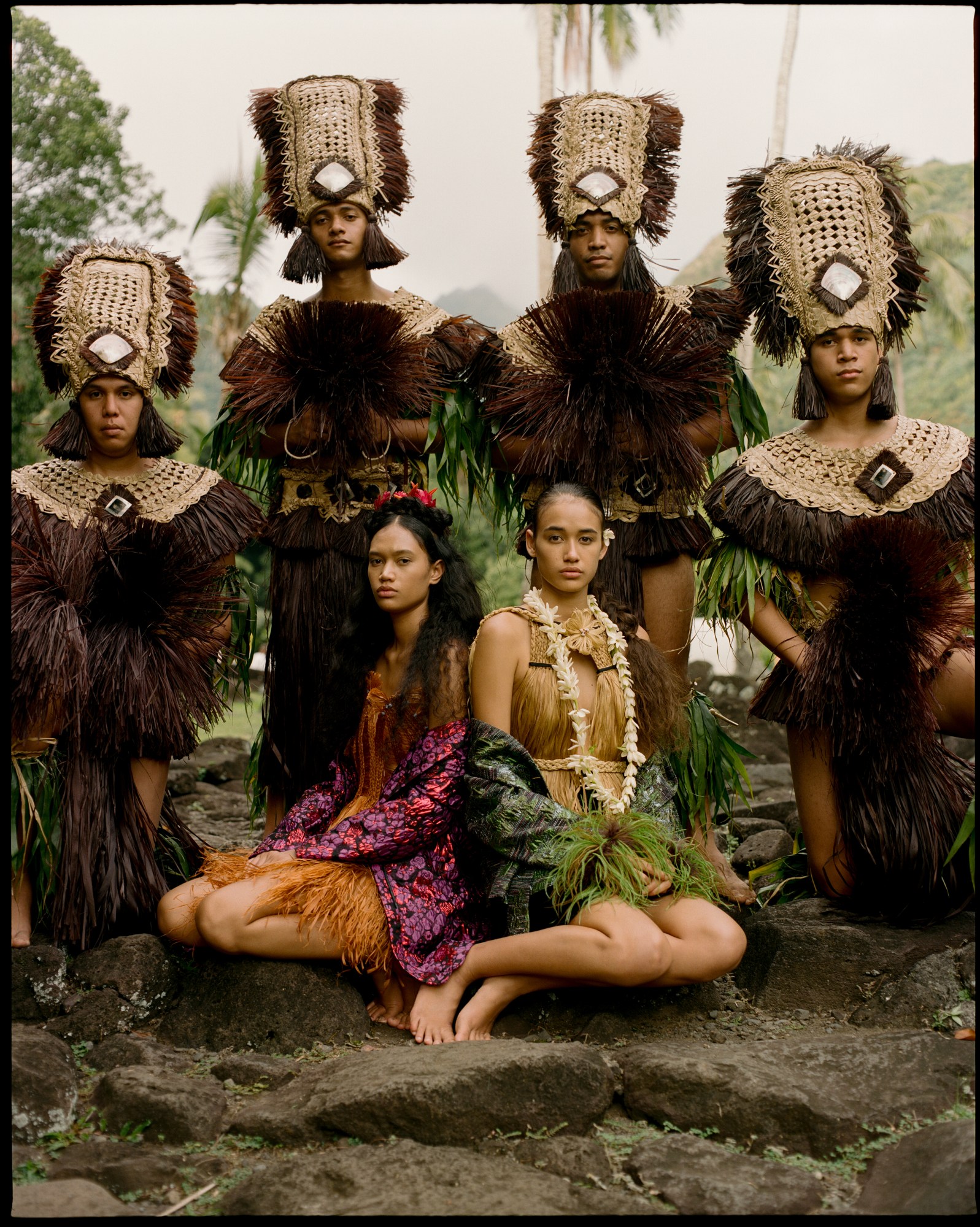
Karl Wan, 29, Designer of Arona Paris
“Although I’ve been living in France for two years now, Polynesian culture has taken an even larger place in my work because I really miss home. Moré is a staple natural fiber used in Polynesian costume. It’s strong and elegant and allows me to keep my Polynesian DNA. It represents who I am. And when it comes to fashion I think it’s better to speak in my own language.”
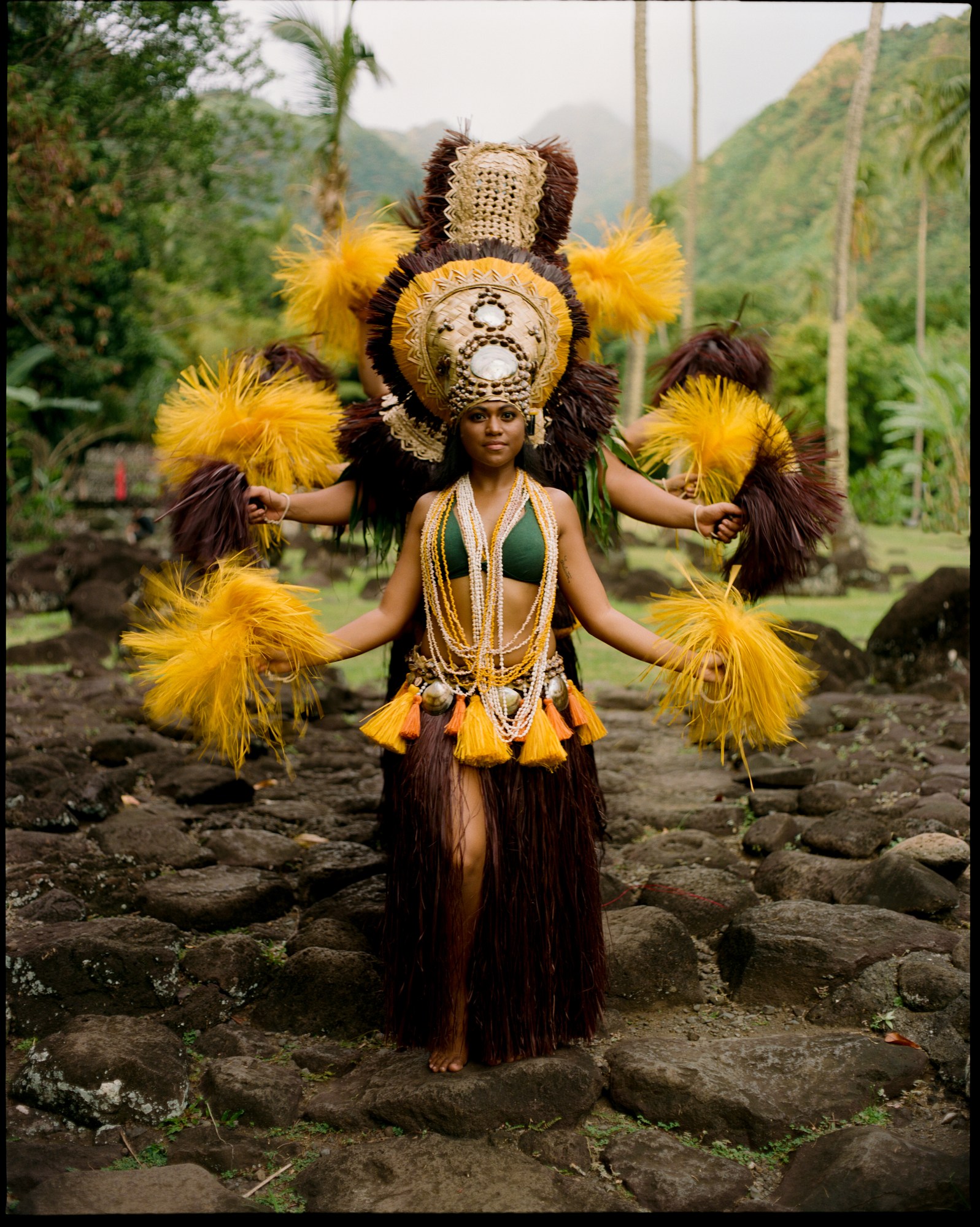
Teani Liu, 36, Stylist
“Everything about the Tahitian way of life was prohibited by the white religious men. Tahitian dance was too sexual for them, Tahitian dress showed too much skin, and traditional tattoos were ungodly.”
“By being far from other countries and being close to nature we can innovate natural unknown materials and give them practical use in the modern world.”

Matani Kainuku, 45, Chief of Nonahere International Dance Group
“Traditional clothes and costume are meant to bestow mana to the one wearing it. They can evoke power, prestige, or wealth of nature, and tell stories of lavish parties, songs, and dances about love, moral freedom, and seduction.”
“Costumes must have a link with a concept, a legend, an idea and must be used to express it by dancing. In some contexts, the costumes of moré may also bestow mana to the one wearing it. If we want to express an idea, the costume will help the artist express it. If we want to focus on the movement of the body and the expression of the face, the costume must help the artist to move and highlight emotions.”
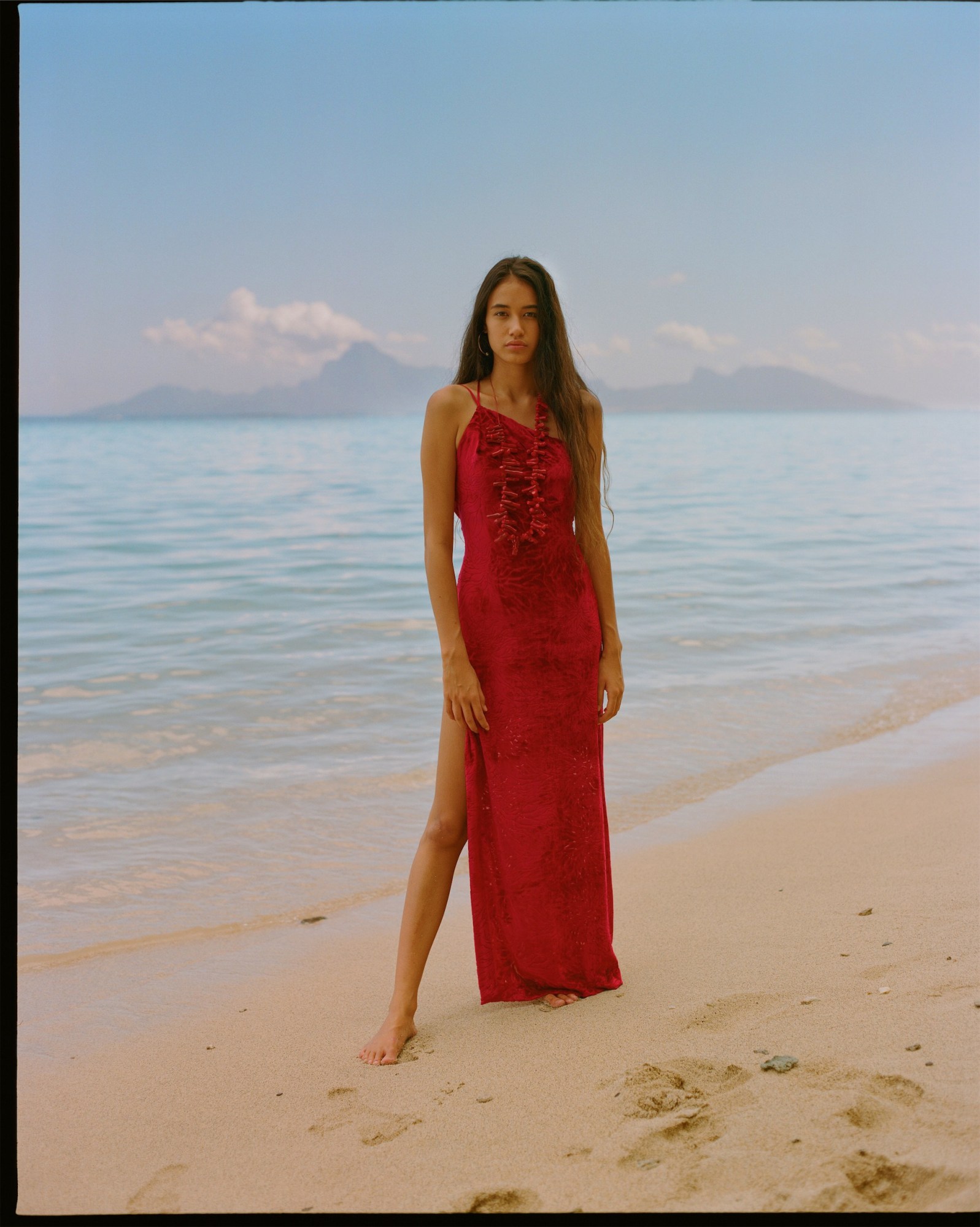
“The red color is the color of the ‘ura, red bird whom feathers were used by only the the biggest chiefs, the ari’i. Red represents mana of power and royalty”
“Yellow represents the sun and is the color of life, or the ora. Each color comes from natural plants and are tinted from natural seeds from Polynesian plants. The colors must link with a story, an idea, a concept, a legend of the land.”
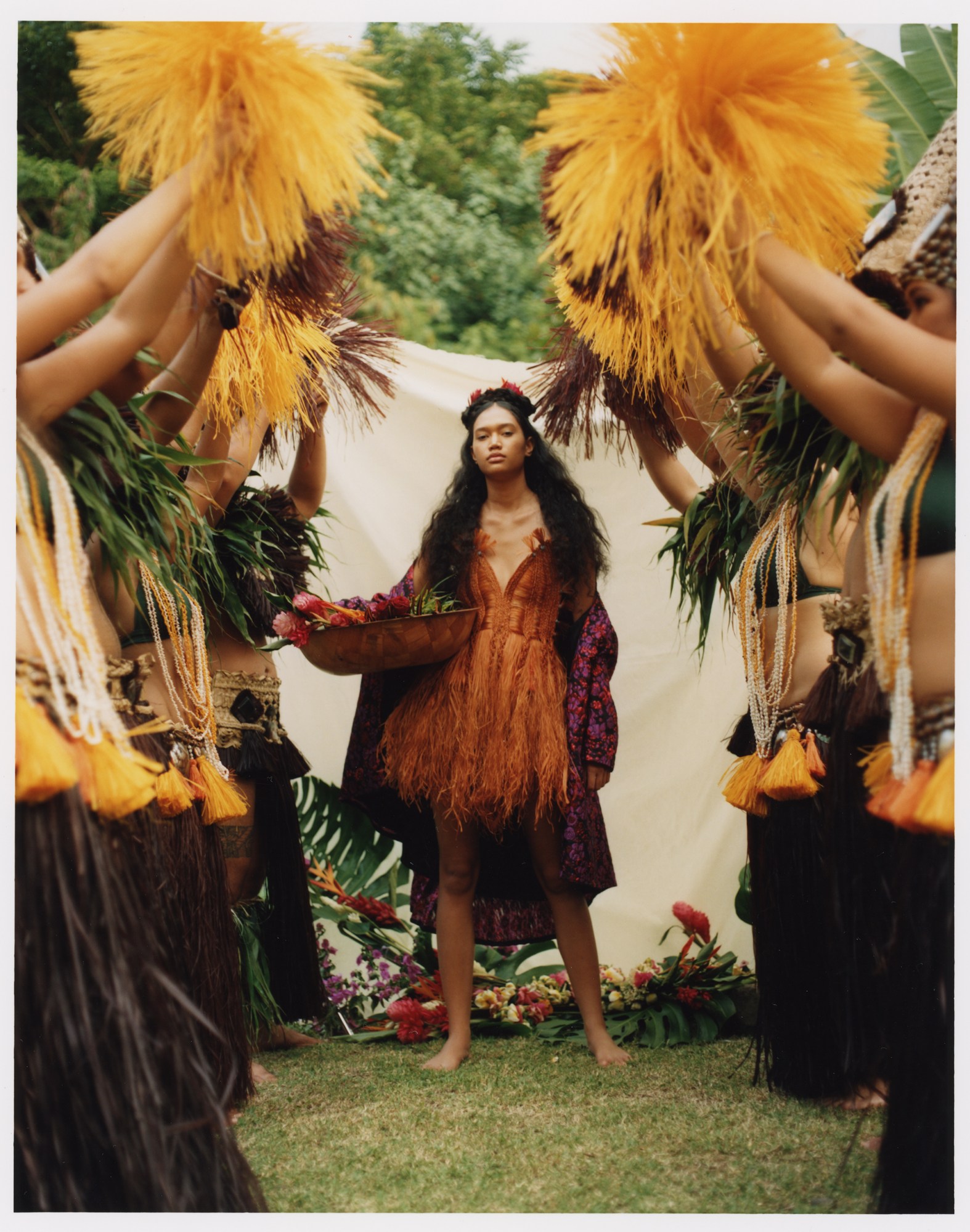
Manu de Schoenburg, Producer
“The Marae Arahurahu was used by Polynesians as a social, religious and political ground before Europeans landed on the islands. They were sacred grounds with many taboos and only royals and priests had access to the inner courts. Religious ceremonies and offerings to the many Polynesian gods where practiced on those sites.”

“These sites represent the legacy of the traditional Polynesian culture, they are still respected and the taboos still feared. They’re very much living heritage, just like the art of tattoo or traditional dances.”
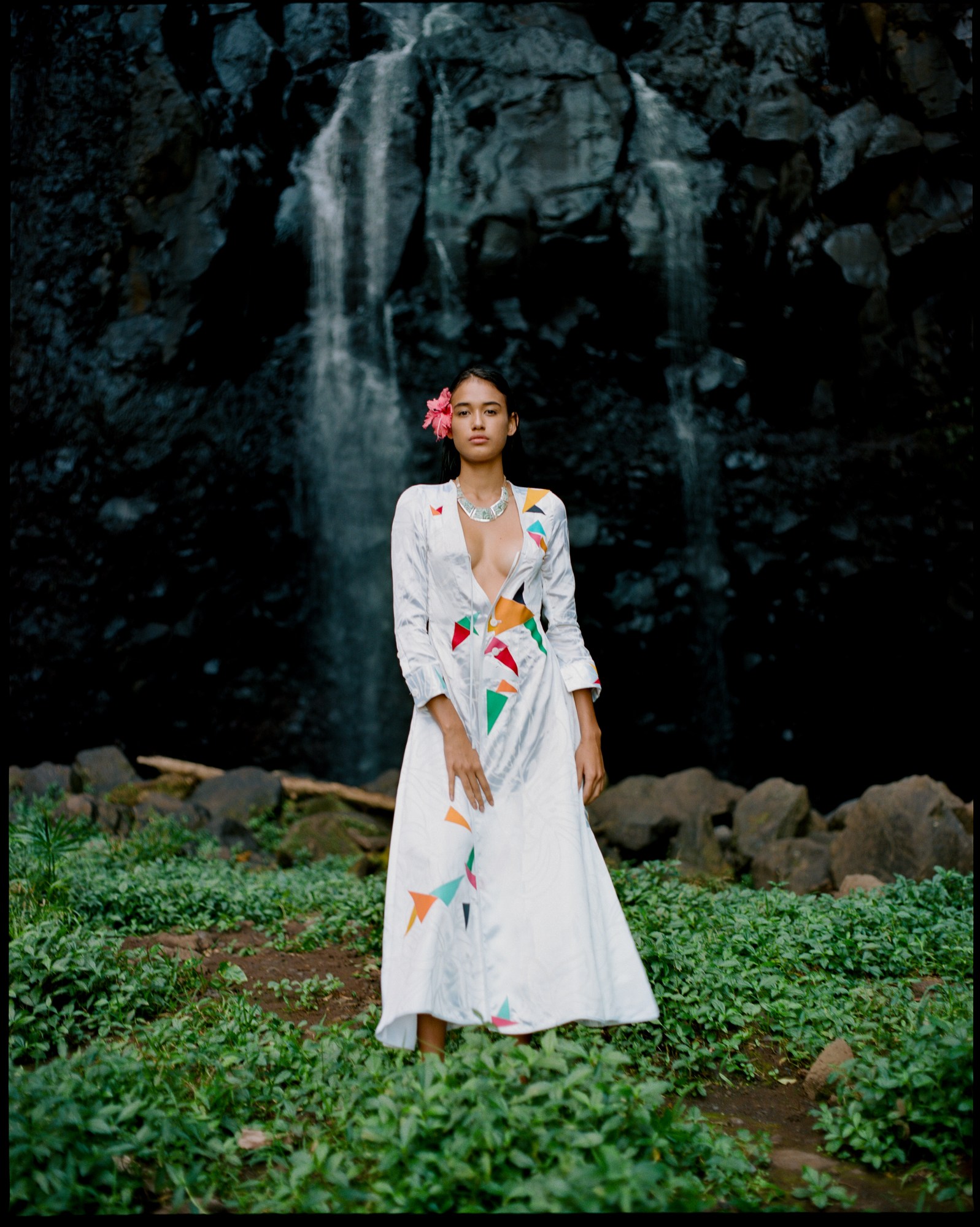
Mama Fauura, 77, Jewelry Designer and Entrepreneur
“Some of my first inspirations came from my childhood village, Tautira, my culture, and the 12 years I spent in France. Now my inspiration comes from all my encounters. This shell in this piece is typical from Tahiti, called the Burgo Shell. We engraved it with Marquisian motifs. You can find Burgos on anywhere on the Tahitian reef, but many people wouldn’t pay it any mind. But once cleaned, they reveal all their splendor with beautiful and pearly green tones.”
“Polynesians have a use for just about every part of the coconut tree. These fans are one of the more decorative and creative uses. Dancers have been known to decorate Tahitian headdresses with niau coconut blanc, creating a stunning visual contrast and texture to the dyed hau shells and seeds.”

Krystal Vongue, 32, Designer of Blossom
“In Tahitian culture using vegetation and flowers is a way of life and above all, a way to respect nature. In the ancient times, we used it for everything: food, building homes, traditional medication, clothes, and even for gifts during ceremonies.”

“This piece was inspired by carnivale in Rio! I wanted to make something spectacular and use beautiful flowers with amazing colors. I used the opuhi, which is a typical traditional Tahitian flower. The red of this flower expresses the royalty. I also used some birds of paradise, another typical Tahitian flower.”
Credits
Creative Director/Stylist: Alexander-Julian Gibbson
Photographer: Emmanuel Monsalve
Assistants: Lina Palacios // Teani Liu
Production: Manu de Schoenburg of Filmin’ Tahiti
Make-up: Nadia Hilal
Hair: Mareva David
Models: Tia Wan + Hinaniui Campello BRAVE Models
Dancers: NONAHERE Dance Group
